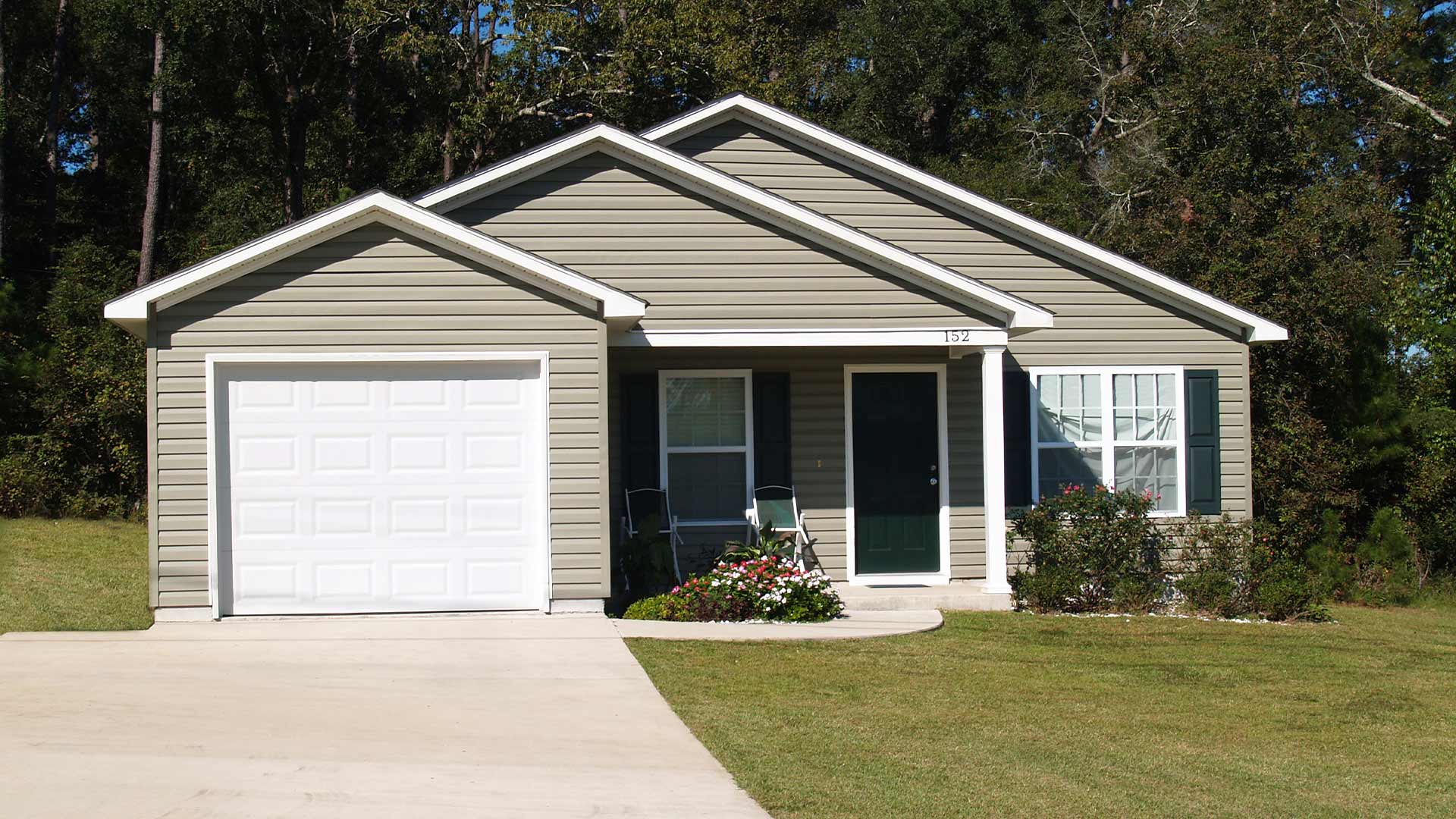
What is an HFA loan?
It’s easy to confuse the HFA loan with the FHA loan. But they’re very different.
HFA stands for Housing Finance Agency or Authority. It refers to your state’s agency that provides advice — and sometimes financial assistance — to homebuyers.
Via the HFA loan program, qualified buyers might be in line for a 3-percent-down mortgage ad even down payment assistance.
In some cases, you don’t have to be a first-time buyer. But you need a low-to-moderate income for the area where you’re buying.
Verify your low-down-payment mortgage eligibility (Apr 19th, 2021)In this article (Skip to…)
- How HFA loans work
- Conventional HFA programs
- HFA loan pros and cons
- Who qualifies?
- How to apply
- Down payment assistance
- HFA vs. conventional loans
- HFA vs. FHA loans
- HFA program FAQ
How the HFA loan program works
HFA loan programs are a partnership between state Housing Authorities and Fannie Mae and Freddie Mac — the agencies that regulate most U.S. mortgages.
HFA loans are meant to make home buying more affordable for those with low-to-moderate income. They can offer lower upfront costs and lower monthly payments than standard mortgage programs.
These home loans are attractive for those who are eligible. You can:
- Make a down payment as low as 3% of the purchase price
- Apply for down payment assistance in the form of a loan or grant
- Pay lower monthly mortgage insurance premiums compared to some other loans
- Mortgage insurance can be canceled later on (unlike FHA loans)
You will probably have to borrow from a lender on your HFA’s approved list. But you’ll generally get a wide choice. So you can still shop around for your best deal.
Meanwhile, either the HFA or your chosen lender should hold your hand throughout the entire process. So, if obstacles arise, they should do their best to help you clear them.
The HFA loan program can make home buying more affordable more approachable for first-time home buyers who qualify.
Check your mortgage options (Apr 19th, 2021)Conventional HFA loan programs
Fannie Mae and Freddie Mac each have their own HFA loan option. Fannie calls its product the HFA Preferred mortgage. And Freddie calls its the HFA Advantage mortgage.
For most borrowers, the two programs are virtually identical.
But, if you have specific needs, there are key differences. Most obviously, Freddie says these loans can only be used to buy a single-family home. Fannie says it allows people to buy 2- to 4-unit homes, though you have to live in one of the units.
Similarly, Fannie says it offers “limited cash-out refinances” while Freddie won’t let you take out any cash at closings.
Overall, you’re more likely to be tripped up by your HFA’s rules than Fannie or Freddie’s. But you’ll want to explain your goals to your HFA contact and ask them to guide you through your choice of home loan.
Pros and cons of HFA loans
Here are the major benefits and drawbacks you’ll want to keep in mind when considering an HFA loan program versus other low-down-payment loans.
Pros
For the right homebuyer, the pros are very attractive:
- Low minimum down payment of 3%
- Chance of getting financial assistance from your HFA to help with the down payment and potentially closing costs
- Lower monthly mortgage insurance payments compared to some other low-down-payment loans
- Stop paying for mortgage insurance when your equity* reaches 20% of the home’s value — Unlike FHA loans, with which you have to pay it until you refinance, move, or pay off your loan
That adds up to a great package for qualified home buyers.
*
Cons
However, the cons mean an HFA mortgages isn’t the right home loan for everyone:
- Inconsistency across the country — Your local HFA’s rules may be different than Fannie and Freddie’s. So you have to dig to discover whether you’re eligible and for what
- DPA amounts vary — Some states and areas are more generous than others when it comes to the down payment assistance on offer
- You need a moderate or low income — If you have a high salary, you’ll need another sort of mortgage
- You need a credit score of at least 620 — FHA loans require only 580 with 3.5% down
- You need to pick the right loan — For most borrowers, Fannie and Freddie’s loan products are virtually the same. But one may trip you up on a minor point while the other lets you move forward. Your HFA should help you choose
Many borrowers won’t be at all troubled by these. But you should be aware of them.
Who qualifies for an HFA loan?
Because each housing finance agency makes its own rules, we can’t give you information that will apply everywhere. But here are some general underwriting guidelines you might see when looking at HFA loan programs.
First-time and repeat buyers may be allowed
Some housing assistance programs are specifically geared toward first-time home buyers. But that’s not always true for HFA loans.
For example, we picked a state at random (Connecticut) and visited its webpage for HFA loans. And the Connecticut Housing Finance Authority says, “You must be a first-time homebuyer or have not owned a home in the past three years.”
But Fannie and Freddie don’t have that rule. And Fannie says, “No first-time homebuyer requirement (You could be eligible even if you’ve purchased homes in the past.)”
So each HFA can apply its own rules over and above Fannie and Freddie’s. You’ll need to check with the one in your state or area to see its offerings and restrictions.
Income limits apply
HFA loans are intended to help those with low-to-moderate incomes. So you probably won’t get them if you’re a high flyer at work. But, as Freddie says, “HFAs establish their own income limits.”
In our randomly chosen state of Connecticut, the HFA says that your gross income must not be greater than 80% of the area median income (AMI). Luckily, it provides a map that shows both income and sales price limits for each town, city, and county. If you’re buying within that state, you simply have to click on the place where you want to buy to receive the information you need.
It’s likely your state’s HFA will have a similar map or some other lookup tool that will provide the same information. If you can’t find one, call the office. They’re there to help.
And your state may be more generous than a limit of 80% of the AMI. So check.
Other borrower requirements
You’ll likely have to meet Fannie and Freddie’s standard credit score requirements. The agencies require a minimum FICO score of 620.
And lenders will want to be sure you can comfortably afford the monthly payments. So they will check to see you don’t have to spend too great a portion of your monthly income on debt payments and other inescapable financial obligations, such as child support or alimony.
This is called your debt-to-income ratio (DTI). You can learn more and discover how to calculate yours here.
With some loans, you also need to show that you have savings or easily accessible reserves — an emergency fund. Freddie says, “No reserves required” for its HFA loans, but again, individual lenders can set their own requirements.
Finally, a homebuyer education course may be required to qualify. These classes are often free and offered online.
Eligible property types
If your HFA allows it, you can use these loans to buy a home or to refinance your existing one. But no cash-out refinances are allowed by Freddie and only limited ones by Fannie.
As long as your HFA’s rules permit, you can buy a single-family or multifamily dwelling with up to four units using the HFA Preferred program from Fannie Mae. But the Freddie Mac HFA Advantage loan only allows one-unit properties.
Eligible property types may include single-family homes, condominiums, Planned Unit Developments (PUDs), and qualified manufactured homes.
Both organizations require you to be purchasing your main residence. So you can’t buy an investment property or vacation home.
How to apply for an HFA loan
To get started, find your state’s HFA in this directory, click the link to its website and have a read. Then call for more information and guidance.
If the person you speak to thinks your application can succeed, they will send you the necessary forms. And your HFA should continue to hold your hand throughout — or at least until a lender takes over helping you.
Note, too, that some cities and counties have their own HFAs. So be sure to check out all your options.
What down payment assistance might I get?
Some HFA programs offer low-interest loans to cover some or all of the down payment, which you pay down in parallel with your main mortgage.
Others offer forgivable loans, meaning you don’t make payments and the loan disappears after you’ve lived in the home for a specified number of years.
Still others offer outright grants: effectively gift money that never has to be repaid.
Yet again, each HFA sets its own rules for the down payment assistance it offers. So what you might get and whether you’re eligible will depend on your state or area’s generosity.
An example from Florida
While researching this article, we happened upon Florida’s offering (PDF). It lets those who are eligible choose from three down payment assistance programs:
- Florida Assist Loan Program — Borrow up to $7,500 at 0% interest. You don’t pay a cent until you move, sell, or refinance*. But then you have to pay it all back
- HFA PLUS second mortgage — Helps with closing costs as well as down payments. This is a five-year loan at 0% interest. You make no monthly payments and 20% is forgiven each year. So, after five years, you owe nothing. It’s a gift!
- Homeownership loan program — You borrow up to $15,000 at 3% interest over 15 years. You pay it down monthly. But if you move, sell or refinance* during that time, the remaining balance must be paid in full
*Florida’s document is more specific and loans become payable when you “sell, refinance, transfer deed, payoff the first mortgage or no longer occupy the property as [your] primary residence.”
Other choices
If your HFA’s down payment assistance program (DPA) can’t or won’t provide the help you need, ask about other DPAs operating in your state.
There are thousands of assistance programs across the country, most of which are not HFAs. So it’s worth checking if there’s another local option that’s more inclusive and generous.
But, of course, if you don’t get the assistance from your HFA, you’re unlikely to be in line for an HFA loan.
Instead, check out Fannie’s HomeReady and Freddie’s Home Possible mortgages. These have similar rules and allow 3% down.
Oh, and there’s another bonus. One 2018 academic study found: “Descriptive evidence indicates that these state-subsidized programs help financially vulnerable households enter homeownership and retain their homes at higher rates than lower-income households purchasing homes in the private market.”
HFA loans vs. other conventional loans
HFA loans aren’t the only conventional mortgages to offer low down payments and special features.
Fannie and Freddie have others, including the ones we mentioned earlier: HomeReady and Home Possible. And down payment assistance can be used with those loans, too.
So why go for an HFA loan? Well, there could be three main reasons:
Check your 3-percent-down mortgage eligibility (Apr 19th, 2021)- It may be easier if your income is below average, because pretty much everyone in the program will be in the same boat. So lenders could make it easier for you to qualify
- With some HFAs, getting a loan through them might earn you some privileges when it comes to down payment assistance. You might even find yourself at the front of the line
- Especially if you’re a first-time homebuyer, you may value having someone knowledgeable at the HFA on your side. And it’s reassuring to know you can call for help or advice at any time
So there could be tangible benefits to the knowledge and assistance that come with the HFA program.
Still, if you don’t qualify, Fannie and Freddie’s other 3-percent-down loans are great options.
HFA vs. FHA mortgages
We mentioned at the top how easy it is to confuse FHA loans with HFA ones. But they’re very different. Here’s why.
FHA loan
FHA loans are mortgages backed by the Federal Housing Administration, an arm of the Department of Housing and Urban Development (HUD).
Unlike the program, loans are widely available from just about any mainstream lender.
Key characteristics of FHA loans compared to HFA loans are:
- Higher down payment — minimum 3.5% of purchase price
- Lower minimum credit score — 580
- No easy way out of mortgage insurance — You typically have to pay premiums monthly until you refinance, sell, or zero your loan balance
- No first-time buyer requirements — The same as Fannie and Freddie. But your HFA may have different rules
These are popular mortgages.
The monthly mortgage insurance cost is the main drawback for many potential buyers. However, it’s possible to ditch your FHA mortgage insurance by refinancing to a conventional loan once you have 20% equity — so don’t think you’re stuck with it forever.
HFA loan
Key characteristics compared with FHA loans:
- Lower down payment — minimum of 3% of purchase price
- Higher minimum credit score — 620
- Sure exit from mortgage insurance — Stop paying as soon as your mortgage balance drops to 80% of your home’s market value
These are attractive benefits. However, HFA loans are less common than FHA. You can easily apply for an FHA mortgage with just about any lender, and there no extra steps (such as working with a local HFA representative).
Thanks to their availability and lenient requirements, FHA loans are popular among first-time buyers looking to get a foot in the door.
Check your FHA mortgage eligibility (Apr 19th, 2021)HFA loan FAQ
HFA Advantage is a mortgage program offered by Freddie Mac in partnership with local Housing Finance Authorities. These loans are typically more affordable than mainstream mortgage programs, and may include down payment assistance. Fannie Mae has a similar program called HFA Preferred.
Yep. A conventional mortgage is one that is not backed by the federal government. Although HFA loans are offered through local governments, they do not have federal backing like the FHA, VA, or USDA program. So they’re considered conventional.
The main rules are that you need a credit score of 620, can comfortably afford the payments, and have an income that’s low-to-moderate for the area where you’re buying. Specific eligibility requirements will vary by state and program, though.
You have to put down at least 3% of the home’s purchase price.
You bet! For some, that’s one of the biggest draws of the HFA loan program. You might be in line for a loan or grant (gift) worth thousands toward your down payment and perhaps closing costs.
Yes. They require you to pay monthly private mortgage insurance premiums until your mortgage balance drops to 80% of your home’s market value. After that, you can stop making payments.
Yes, eligible homeowners can use these programs to refinance their existing mortgage loans. Fannie Mae’s HFA Preferred mortgage even lets you have limited cash-back. Freddie’s HFA Advantage also lets you refinance, but it doesn’t permit any cash-back. Note that your HFA may have its own rules about refinancing that trump Fannie and Freddie’s.
Not at all. Fannie and Freddie both welcome seasoned (repeat) buyers. But not all HFAs do, so check your local guidelines. These types of programs often define a first-time home buyer as someone who has not owned a home in the last 3 years.
HFA loan interest rates may be lower than those for mainstream loans. But they can vary a lot by program and borrower. So ask your local HFA for guidance. And, once you start to choose a lender, get multiple quotes and compare their rates and costs to find your best deal.
You’ll need to check with your local Housing Finance Authority to know whether you qualify for an HFA loan. Even if you don’t, though, there are other conventional loan programs with 3% down that are more widely available. So explore all your options and find the right low-down-payment loan for you.
Verify your new rate (Apr 19th, 2021)



